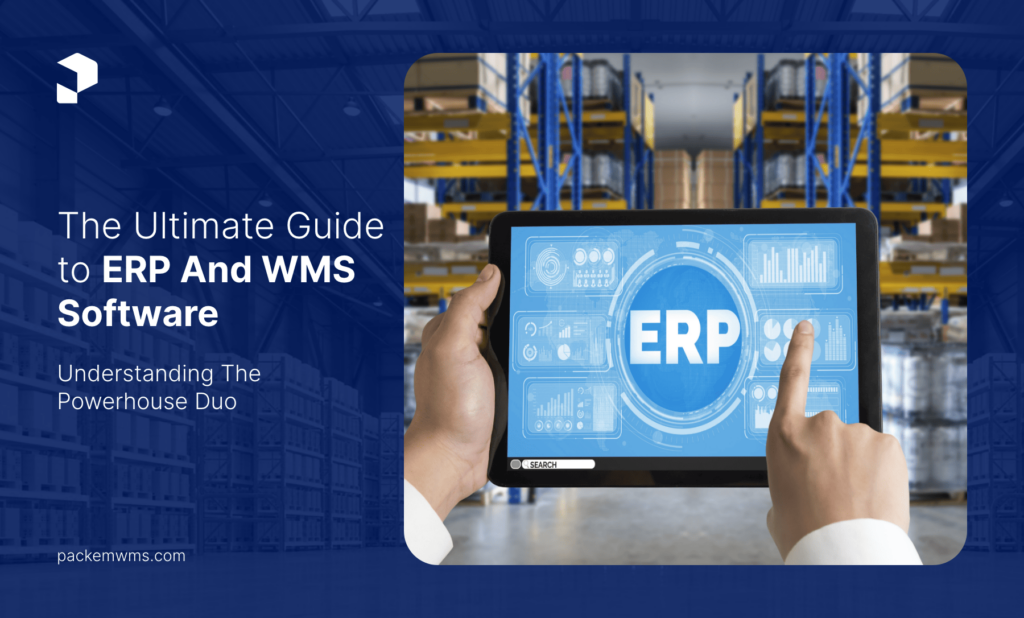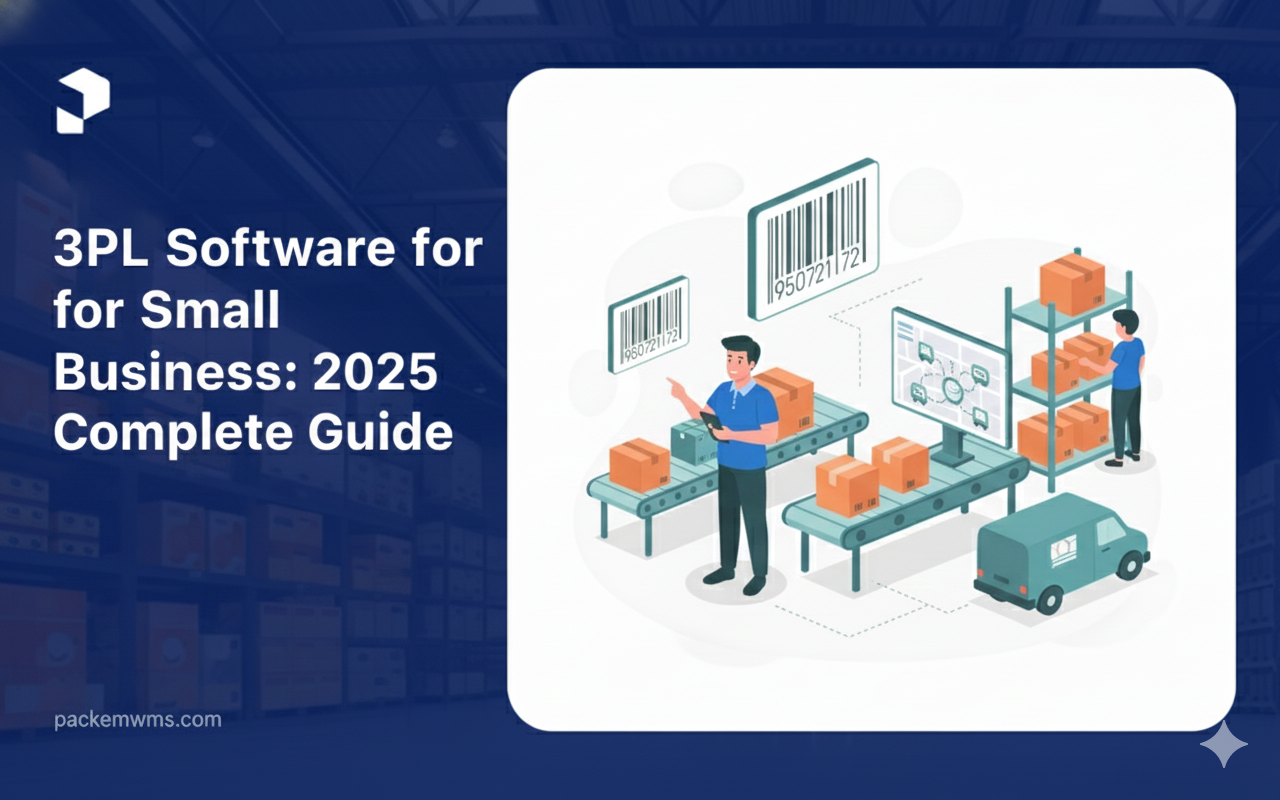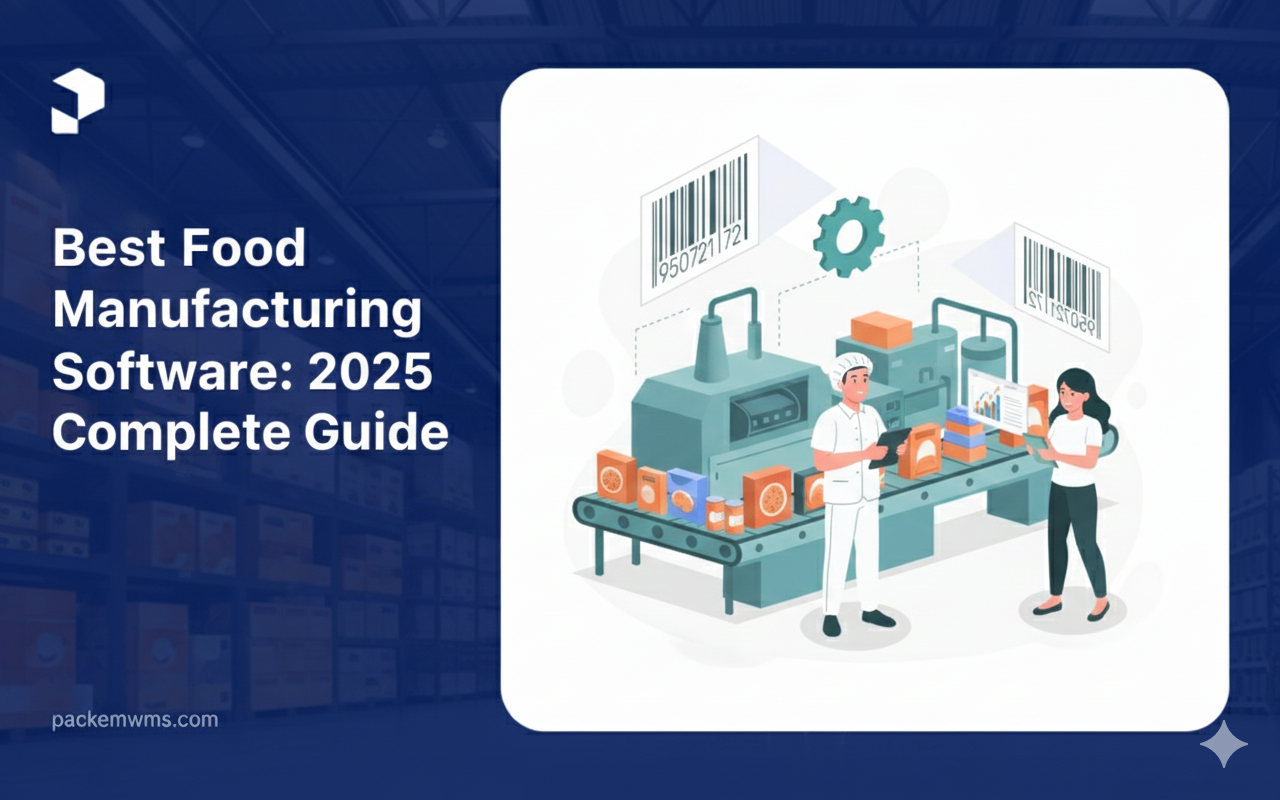Enterprise Resource Planning (ERP) and Warehouse Management System (WMS) are some of the most important software aspects for any business management. Therefore, these systems play a very significant part in organizing all the operations of a business.
For a business owner to plunge into the technology best for its needs, understanding the difference between the two will be necessary. Therefore, the article is going to delve into further details about the ERP and WMS software, including a very comprehensive comparison, to assist you in taking the view on investments.
ERP vs WMS – Key Differences – Scope of Functionality
1. ERP Systems
The ERP is provided with a broad base of functionalities that can handle core business functions from finance, HR, procurement, and manufacturing. The main idea of ERP is to gather all the organizational processes into one, which can holistically lead to providing solutions that can orchestrate the organization.
2. WMS Systems
On the other side, the WMS software deals strictly with warehouse operations. The central part of their business focuses on optimizing logistics and supply chain processes in a warehouse by effectively managing inventory and order fulfillment.
Integration
1. ERP Systems
A technique bringing several departments and functions of an organization onto one information system so that the corporation can have a broader view of the whole business organization. This can also improve relations across other departments and collaboration, eventually improving efficiency.
2. WMS Systems
It can be mainly used for optimization of a single purpose with concerns to operations of a warehouse but can be integrated with other systems like Enterprise Resources Planning and Transmission Management System. It specializes in logistics and supply chain aspects with details and control down to the second.
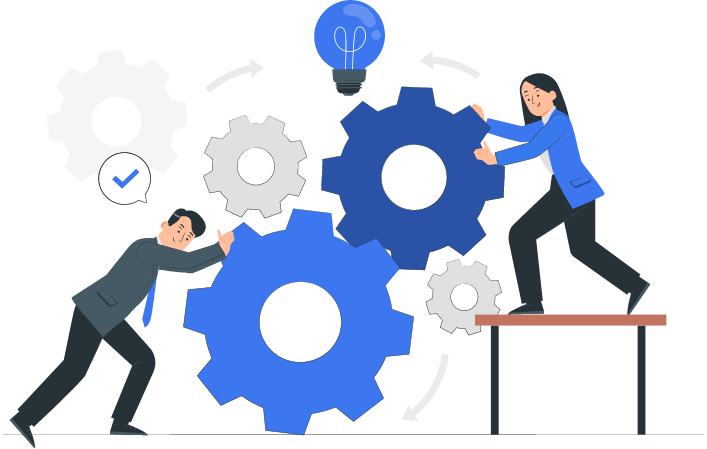
Implementation
1. ERP Systems
Implementing an ERP system is a daunting task; it is extensive and time-consuming. More than not, it also demands much customization to suit the business requirements because of its uniqueness and in-depth staff training. Usually, an implementation can take some months to a year to be completed. It would depend on the scale and complexity of the organization.
2. WMS Systems
Implementations of WMS software usually are more straightforward and quicker to implement than ERP systems. Even though it would need some form of customization and training, the fact that it is designed for work within the context of the warehouse gives it a much smaller scope of implementation and, consequently, a much quicker deployment.
What is ERP Software?
Enterprise Resource Planning systems are integrated packages of software developed for the management and automation of core business processes of an organization in any department.
It combines finance, human resource, procurement, and manufacturing functions in a manner to eliminate functional departure silos from the back-end and ensure all departments share information of a similar nature and is accurate.
Additionally, an ERP can centralize data and standard processes and give real-time insights into facilitating both managerial and operational efficiencies.
Experience the simplest inventory management software.
Are you ready to transform how your business does inventory?
Key Features of ERP Software
1. Single Source of Information
One of the best advantages of the ERP system is a single source of information. This takes the stride where all the business data is stored in only one repository and, therefore, brings one single view of the organization. Centralizing the data will significantly prevent data duplication, reduce errors, and guarantee that all within the organization are working with similar information.
2. Real-time Data Tracking
ERP software can track data in real-time, and therefore, the managers can follow business processes and performance. This way, a manager can make real-time decisions based on recent market actions and operational challenges.
3. Comprehensive Reporting
The ERP software avails advanced tools of reporting that may prepare full-fledged reports focusing on specific aspects of the business. Some examples include factors such as the financial performance of the business, stock levels, and sales trends. This should help businesses review their operations and highlight areas needing streamlining.
4. Scalability
An ERP system should be designed so that, as the business grows, it can be scalable. This means that, with growth within the organization, one should be able to add more modules and functionalities to the system to suit the increase in complexity and volume. This makes software relevant and valuable as a business grows.
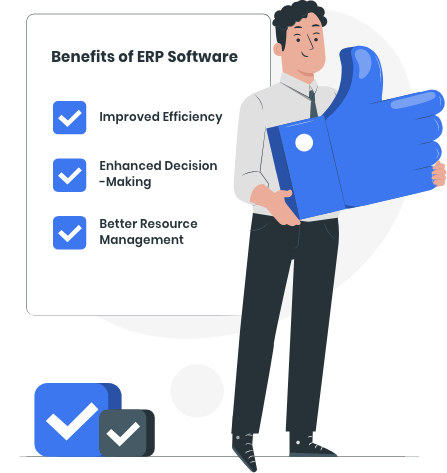
Benefits of ERP Software
1. Improved Efficiency
ERP software improves operational efficiency through the automation of routine tasks and standardization of procedures. In this respect, employees are directed toward adding more value to companies since they do not spend much time doing administration; as a result, there is increased productivity, and the cost of operation goes down.
2. Enhanced Decision-Making
Managers can zero in on the information to make informed decisions with the help of real-time data and extensive reporting in the ERPs. Visibility of business operations yields improved strategic planning, which allows the organization to manage responses to variations in the market.
3. Better Resource Management
ERP will enable organizations to visually see the resources available and how they are used to improve planning and allocation, which in turn may reduce waste and increase profitability.
What is WMS Software?
The Warehouse Management System (WMS) software is an application designed to automate the daily operations of a warehouse. Logistics and supply chain functions such as inventory tracking, picking and packing, shipping in real-time, and labor optimizations have more traditionally been the focus areas of WMS applications among other criteria. They result in cost reductions and an increase in customer satisfaction.
Key Features of WMS Software
1. Inventory Visibility
The WMS software assures inventory visibility, meaning real-time information related to inventory levels, locations, and movements. The visibility ensures that, at any one point in time, businesses are aware of what stock is in the warehouse, its storage location, and the trends in which it is moving out of the door. Enhanced inventory visibility reduces stockouts and overstock situations and improves accuracy in order fulfillment.
2. Warehouse Automation
This is an application in a WMS residing as a functionality where automation tools are applied to streamline the processes in a warehouse. Some of these tools are barcode scanning, RFID tagging, automated conveyor systems, and robotic picking solutions meant to increase efficiency by removing the element of human error. Automation of repetitive tasks by the WMS contributes to operational efficiency by minimizing risks associated with human errors.
3. Order Fulfillment
The significant core capability of WMS software happens to be order fulfillment. This ranges from picking to packing and shipping orders with speed and accuracy. WMS systems are embedded with algorithms to find the most efficient picking routes and, thus, process orders at speed and with minimal errors.
4. Labor Management
The WMS software comprises labor management features to manage the people in the warehouse better. This could mean scheduling, task assignment, measuring performance, and labor needs in the future. The promise of good labor-management optimization offers businesses the correct number of staff at the right time, hence increasing productivity and lowering labor costs.
Benefits of WMS Software
1. High Precision
The amount of precision in a warehouse increases due to the provision of real-time data and automation of associated processes by the WMS software. It reduces the opportunity to ship the wrong items for the incorrect order or misplace inventory, which will just upset customers and eventually increase operational costs.
2. WMS Operational Cost Reduction
Helps optimize and improve the process efficiency of warehouses—this brings about a reduction in the operational costs of a business. Automation reduces workforce requirements, and effective management of inventory cuts down the extra costs associated with holding stocks in excess—additionally, the costs involved with additional stock and stockouts.
3. Increased Level of Customer Service
Customer service also improves significantly through the proper and smooth processing of the orders. If the processing of the order is done smoothly, accurately, and in a fast manner, courtesy of the proactive WMS software, then the delivery to the customers also occurs in an early and accurate manner, with the least possible number of malfunctionings. This improves the overall experience of the customer and, therefore, is probably going to help in getting increased customer loyalty.

Choosing the Right Solution for Your Business
Assess Your Needs
Before you choose between the ERP and WMS software, you need to evaluate your company’s needs. You should be guided by the answers to the following questions:
-
- What are the main business goals?
- What are the processes that you want to enhance the most?
- What is your business struggling with at the moment?
- How complicated is your supply chain and logistics?
This will give you a reasonably firm grasp of what you need to understand: which one would be better for your business—the comprehensive coverage of an ERP solution or the focus of a WMS.
Scalability
As you consider the software solutions, it should be scalable. In both cases, ERP and WMS software, that’s possible, but the extent and nature depend significantly.
ERP Systems:
Scalability of this system would be in the aspect that the growth of the business is accommodated by simply adding new functions when need be. This is to ensure that it is value-driven when the company grows and diversifies.
WMS Systems:
In the classic sense of the item, software scalability incorporates increased operation in the warehouse, though more specialized toward the logistics and supply chain procedures. If your company’s growth demands it, a WMS may just hold the key to having your warehouse operations ramped up significantly.
Budget Considerations
Cost is always a critical factor when choosing software. Compare the costs involved with implementing and maintaining each type of software.
ERP Systems:
Implementation of the ERP software might be costly because the software is complex and requires the software to be tailor-made. Ongoing costs, which fall under this type of software, include software license, maintenance, and support. However, the comprehensive functionality of the ERP software can be pretty helpful in the long run because of an increase in total business productivity.
WMS Systems:
WMS software is generally much cheaper to implement than an ERP system because it addresses a much narrower scope of operation. Of course, there are customization, training, and maintenance costs, but picking is often just a fraction of the price of a complete ERP installation. Furthermore, efficiency is very high, so that the investment in warehousing operations can be recovered fast.
Experience the simplest inventory management software.
Are you ready to transform how your business does inventory?
Conclusion
Understanding the nuances of ERP and WMS software is necessary for you to make the most of your business management tools. ERP software helps you manage all types of business processes whereas WMS software is dedicated to automating and streamlining warehouse processes. Which software is best for you will depend on your particular business needs and operational goals.
Once you understand the functionalities, benefits, and target audience of each system, you can then determine which combination of an ERP or WMS solution makes sense for your business. For a unique perspective, you may also want to reach out to someone who can help you build a custom software solution from the ground up. Suggest that your readers look at the software packages from PackemWMS and talk to a consultant about a solution tailored for their business.
Operationalize your business funnels now. Take advantage of the ERP and WMS software! Look for top solutions and see how these platforms can provide a high-level overview of your processes, increase efficiency, and ultimately improve your bottom line. This updated call to action accomplishes two things:
- Is vendor-neutral: It does not favor a particular vendor but instead offers general features of ERP and WMS software.
- Activates action: It uses strong verbs like research or explore, so readers quickly understand that they need to take action.
- Be useful: It says how ERP and WMS software can bring business efficiency to the organization and increase profit.
FAQ's
The answer is a resounding yes — ERP software and WMS software can be integrated to offer a full solution managing business activities and warehouse functions. Different systems can integrate with one another, which allows for the free flow of information and reduces efforts on both ends.
ERP systems are best for businesses that have complex operations, many departments, and need their processes to be integrated. This includes Manufacturing, Retail, Healthcare, and Professional Services, where efficient operations and centralized data are a must.
WMS software is definitely a value to small businesses, especially with upper warehousing and logistic operations. It helps improve inventory management, minimize operational costs, and manage agility to fulfill customer orders accurately and efficiently.
The implementation timeline varies depending on the complexity and scope of the software. ERP systems can take several months to a year to implement due to their extensive integration and customization requirements. WMS software typically has a shorter implementation period, often a few months, as it focuses on a more specific set of operations.
The main costs include software licensing, implementation (such as customization and integration), training, and ongoing maintenance and support. ERP systems tend to have higher upfront and ongoing costs due to their comprehensive nature, while WMS systems generally have lower costs focused on warehousing functions.

